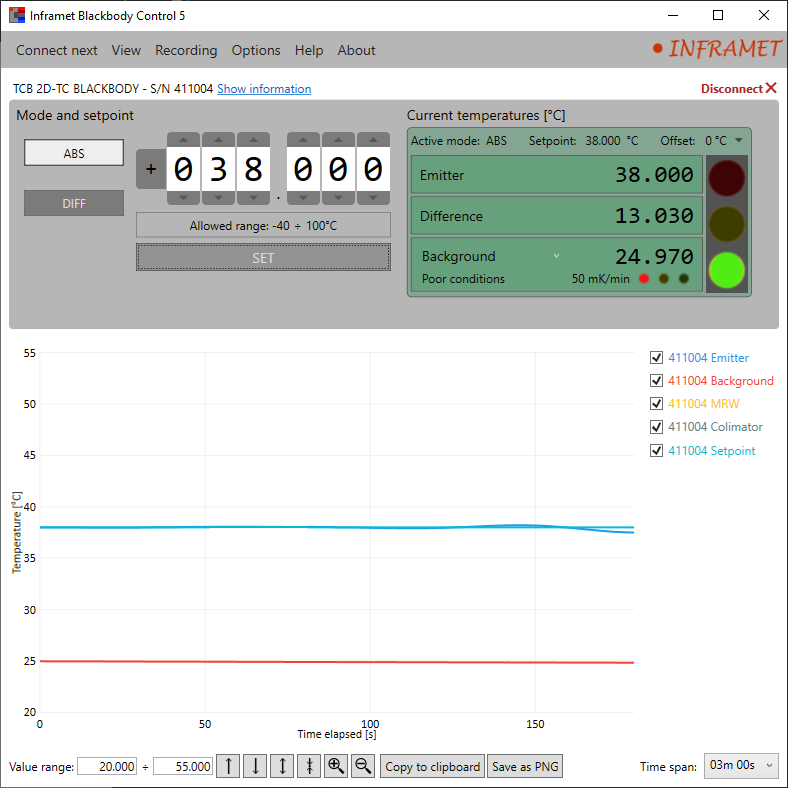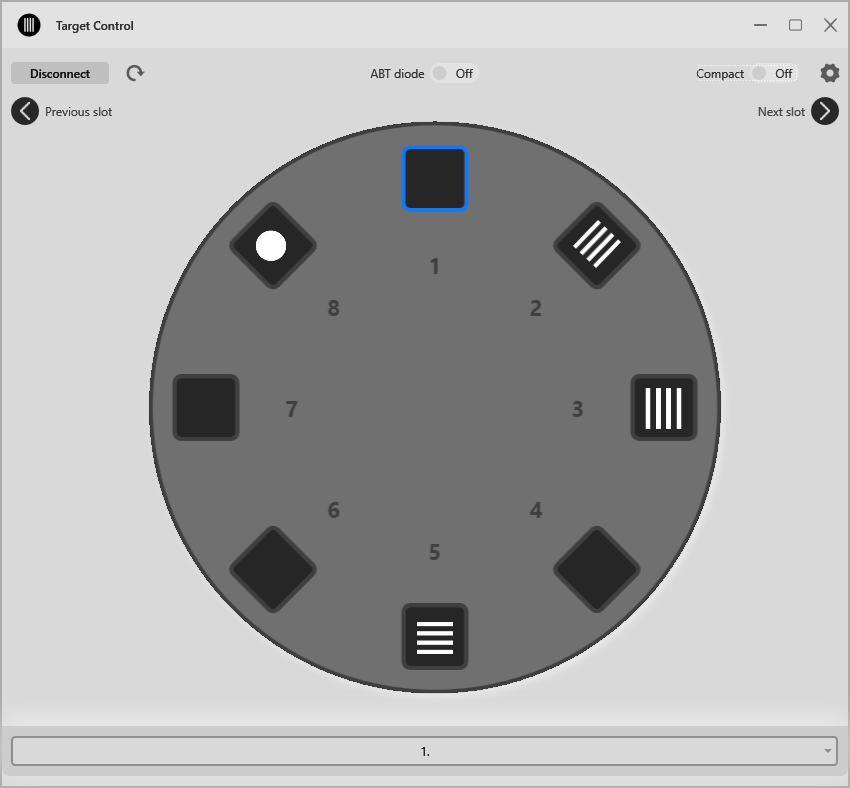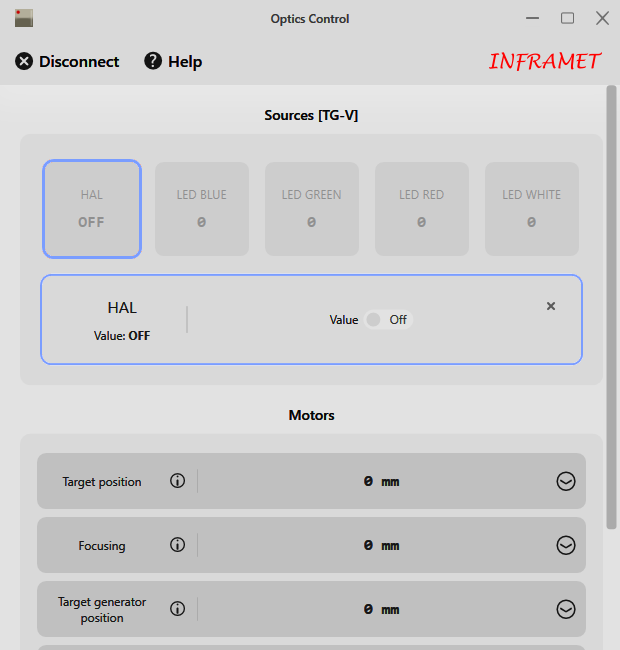Computing system
The Computing System (COS) is a specialized PC-based solution equipped with frame grabber cards and specialized software, optimized for testing surveillance Electro-Optical (EO) systems and modules of such systems. The COS system performs three primary functions:
- Control: Manages various components of Inframet test systems, including blackbodies, rotary wheels, and light sources.
- Image Capture and Analysis: Captures and analyzes images from EO imaging systems or cameras used within Inframet test setups.
- Data Processing: Processes data and calculates key parameters of the tested EO systems.




System Architecture
The COS system is composed of three main components:
- PC Unit: The core of the COS system, interfacing with both the Inframet test system and the tested EO equipment. Inframet custom-builds its PCs from individual modules to ensure compatibility with frame grabbers, test system electronics, and to enhance overall system reliability. While similar to standard office PCs, these units are optimized for high performance and compatibility with the electronics of the test systems.
-
Frame Grabbing Module: Inframet offers a wide range of frame grabbers that support
image
acquisition across multiple electronic standards, including:
- Analog Video: PAL, NTSC
- Digital Video: Camera Link, CoaXPress, HDMI, SDI, LVDS, GenICam standard, UVC standard, RTSP standard
- Capture images from cameras in non standard formats
- Test Software Suite: Inframet provides a suite of specialized software programs designed to support the testing of various EO systems. These programs are highly interoperable, enabling the creation of powerful, user-friendly test systems tailored to specific testing needs.
Available Test Systems
Inframet offers a long series of specialized computer programs to support tests of different EO systems as shown in list below:
- Blackbody Control
- SUB-T
- TAS-T Assistant
- BOR Boresight Assistant
- UVIC Display
- UVIR Control
- TAS-UVIR Assistant
- NV Control
- TAS-I Test Assistant
- TAS-O Assistant
- TOPO Assistant
- Light Source Control
- SUB-V
- TAS-V Assistant
- BOR Boresight Assistant
- Pulse Browser
- OPG10 Control
- Latra Control
- LSR Control
- BOR
- L64 Control
- Blackbody Control
- SUB-T
- Target Control
- VIT Control
- SIT Control
- SOL Control
- Light Source Control
- NV Control
- BOR Boresight Assistant
- TAS-SR/SE Assistant
- Light Source Control
- Light Source Control
- SUB-V
- TAS-SR Test Assistant
- BOR Boresight Assistant
- Blackbody Control
- SUB-T
- TAS-T Assistant
- BOR Assistant
- MET
- Light Source Control
- TAS-V Assistant
- SUB-V
- Pulse Browser
- Blackbody Control
- TAN
- SPOT Control
- TRAL Control
- Blackbody Control
TAS 7: Flagship Test Assistant System
TAS 7 is Inframet's flagship software, serving as a shell around various testing modules specifically designed for measuring the performance of vision devices within Inframet test systems. As the Test ASsistant, TAS 7 automates and supports the measurement process, providing a streamlined and efficient way to conduct tests and manage data. Currently TAS 7 comes with different versions available that determines the measurement modules available. Given TAS one of the most important software for measuring, we are proudly developing a newer updated version that will unify all previous versions into one, giving the possibility to include all modules into only one piece of software.
Core Functions
- Modular Structure: TAS 7 acts as a central hub, integrating multiple testing modules that cater to a wide range of measurements essential for evaluating vision systems.
- Automated Testing Workflow: The software simplifies the testing process by automating data collection, execution of test sequences, and result analysis, reducing the need for manual intervention.
Key Measurement Modules
TAS 7 includes (depending on version) a comprehensive suite of measurement modules that cover critical aspects of vision device performance. Here is a non exhaustive list of the possible measurements that can be done:
- 3D Noise: Measures the noise characteristics in three dimensions to assess image quality.
- Depth of Field & Depth of Focus: Evaluates the range over which the system can maintain acceptable focus.
- Effective Focal Length: Determines the actual focal length of the lens or optical system.
- Vignetting: Measures the reduction in image brightness or saturation at the periphery compared to the image center.
- Absolute Transmission: Assesses the amount of light transmitted through the system.
- MTF (Modulation Transfer Function): Analyzes the system's ability to preserve image contrast at different spatial frequencies.
- Noise Parameters: Evaluates various noise characteristics affecting image quality.
- Distortion: Measures the deviation from the intended image geometry.
- SNR (Signal-to-Noise Ratio): Determines the ratio of signal strength to noise level in the system.
- Field of View: Measures the observable area through the system.
- Sensitivity & Responsivity: Assesses the system’s responsiveness to light and other stimuli.
Sub-T And Sub-V: Subjective measurements
Sub-T is an application specifically designed to support MRTD (Minimum Resolvable
Temperature
Difference), MDTD (Minimum Detectable Temperature Difference), and TOD (Triangle Orientation
Discrimination) measurements. It streamlines the measurement process by combining features like
video preview, Blackbody communication, and automated result calculations, making it a valuable
tool for enhancing testing efficiency.
Sub-V is a dedicated software for measuring the Minimum Resolvable Contrast (MRC) and the
resolution of tested cameras. It provides a live view from the camera, allowing users to
comfortably select resolved USAF patterns, including group and element numbers, thus
facilitating accurate and user-friendly testing of camera performance.
SDKs for Control Software and Test Modules
Inframet offers Software Development Kits (SDKs) for most of its control software and test modules, providing flexibility and integration capabilities for advanced users. These SDKs allow for:
- Customization and Automation: Users can customize the testing procedures, automate control tasks, and integrate Inframet's test modules with other systems or custom software environments.
- Enhanced Control: SDKs provide access to key functions of the control software, enabling users to fine-tune the operation of test systems, such as managing Blackbodies, target wheels, and other components with precise control.
- Integration with External Systems: The SDKs facilitate seamless integration with third-party software and hardware, allowing for expanded testing capabilities and interoperability within broader testing frameworks.
- Documentation and Support: Each SDK comes with comprehensive documentation to help users quickly get started and efficiently develop their custom solutions.
